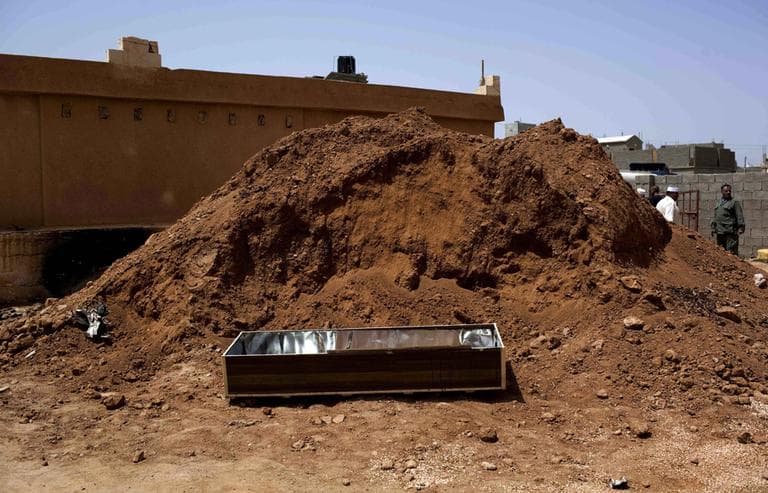Advertisement
Benghazi Life Reflects Harsh Libya War Reality

Strolling along Benghazi's seaside promenade, a breeze deflecting the heat from a sun blazing in a cloudless, azure sky, it's hard to imagine a country at war - until you look more closely.
A lone woman in black robes stands out against the seawall.
A young girl, wearing a coat against the slight chill that invades as the sun sets, looks out to sea, shoulders hunched as if she carries the troubles of a woman 10 times her age.
An elderly man, his silver hair glowing against the shadow of his tailor shop, contemplates the long-ago days when he made suits for a young and dashing Moammar Gadhafi, when the army captain who launched his 1969 coup d'etat from Benghazi still was considered a hero.
Near the courthouse that has become the rallying place of the citizens who rose against Moammar Gadhafi three months ago and started Libya's revolution, a woman walks solemnly, holding a framed photograph of a son she says was killed by Gadhafi's forces in 1994.
The wall of the courthouse is covered with portraits of other "martyrs," documenting decades of brutality with the images of those hanged in public, gunned down on the street, tortured to death behind the walls of feared buildings, or simply "disappeared" for voicing opposition to Gadhafi's rule.
"Why Me?" asks a sign written in blood red along the seawall.
Many walls in this Mediterranean port are covered in graffiti, much of it depicting Gadhafi as a beast, a monster, or the devil with red horns.
At Benghazi Zoo, a flaking statue of a dinosaur seems to serve as a metaphor for the leader who refuses to cede power after almost 42 years.
Much of the graffiti follows the route of near-daily funeral processions for those killed at the front of a largely stalemated war. The processions are punctuated by the staccato of automatic gunfire - shots regularly fired into the air in tribute, in celebration, for any reason at all in a city where the residents looted armories, and thousands of ordinary citizens are running around with guns.
Close up, the city is decaying, left to rot while Gadhafi invested billions of Libya's dollars abroad. At home, people worked two jobs to get by and make enough money to send children to schools and the sick to hospitals abroad, as Libya's health and education systems ran down.
The nearest war front is down a four-lane highway south of Benghazi, where the burned-out hulk of a car near several crippled tanks bears testimony to NATO airstrikes that prevented Gadhafi's troops from capturing the city - and its freedom-minded citizens - in March.
NATO strikes on the columns of advancing tanks saved the city from Gadhafi's rockets and shells. The burned shells of buildings in Benghazi are headquarters of once-feared government services such as internal security that were set ablaze by the protesters themselves.
Further along the road, in swirls of dust kicked up by a sandstorm, the carcass of a camel lies near more blistered tanks. They testify to an early NATO strike that went wrong, hitting advancing rebels.
Some 90 miles (150 kilometers) south of Benghazi is Ajdabiya, a virtual ghost town that is the nearest to the battlefront. Down a maze of streets, some blocked with rocketed cars or pieces of cinder blocks, a butcher slaughters a camel according to Muslim ritual in preparation for a wedding long-delayed by the war.
In Ajdabiya, as in Benghazi, cranes are stilled and work has stopped on some of the grandiose projects that Gadhafi long had promised - a 200,000 apartment complex being built by the Chinese for more than five years; a fast train linking Benghazi to Tripoli.
Today, with even phone connections cut between Gadhafi's stronghold in Tripoli and the rebel bastion in Benghazi, people dream of the dictator's fall and being able to just drive from Benghazi to Tripoli.
This program aired on May 18, 2011. The audio for this program is not available.